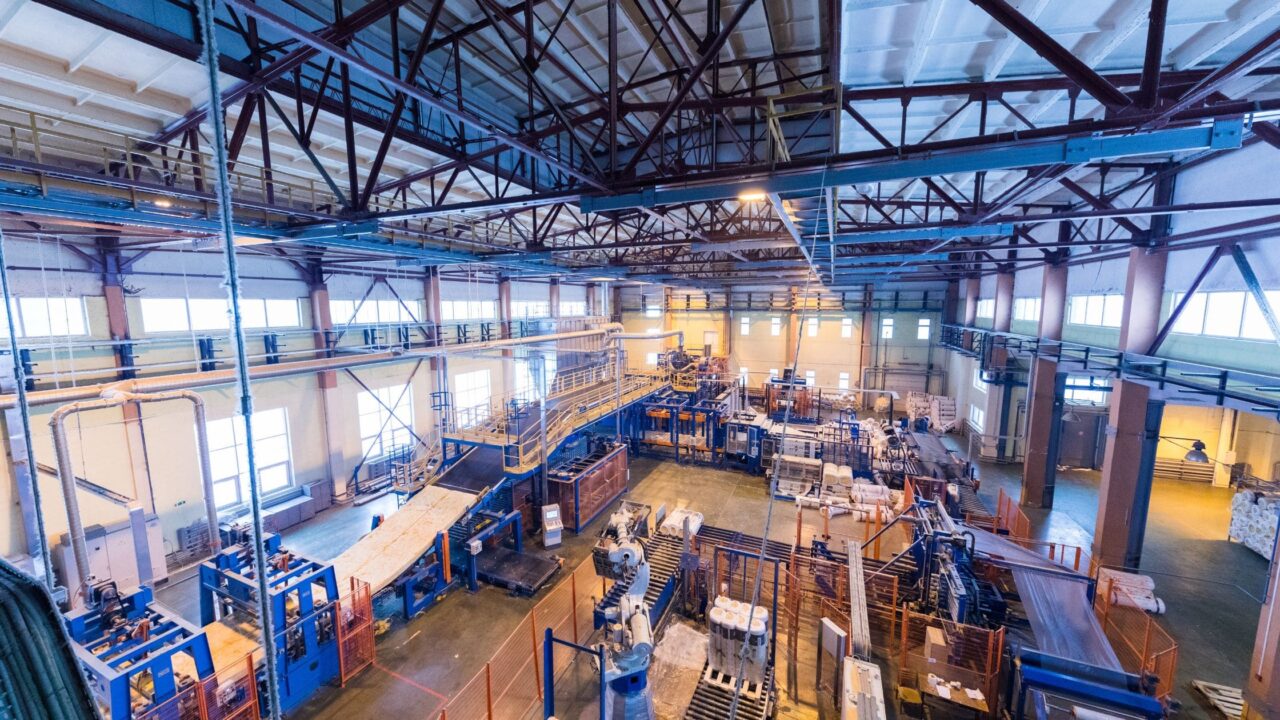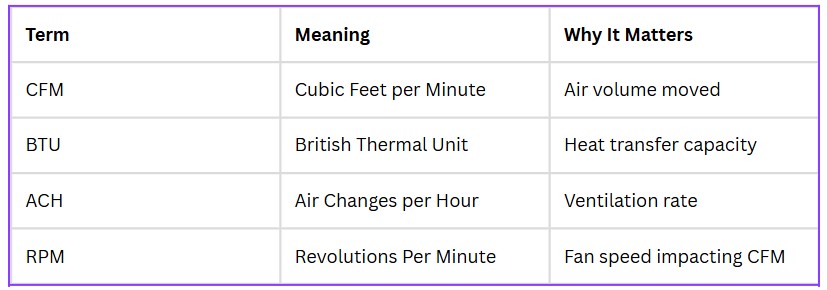If you are managing or designing the HVAC system for an industrial facility, then understanding CFM is not just helpful – it is necessary. In this guide, we will explain what the CFM (cubic feet per minute) in HVAC means, why it plays an important role in the environment of your factory, and how it can be right, improve efficiency, air quality, and cost savings.
What Is CFM in HVAC?
CFM (cubic feet per minute) is a measure of airflow volume. This tells you how much air is taken in by your HVAC system every minute. In simple terms, “CFM is the amount of air that your HVAC system can supply or remove from one place per minute.”

It’s a crucial metric in:
- Ventilation systems
- Air coolers and exhausts
- Air handlers (AHUs)
- Duct design and distribution
- Industrial air purification systems
Why Is CFM Important for Your Factory?
Factories work in an environment with high temperatures, pollutants, smoke, and machinery. Why the right CFM here is an important factor for industrial HVAC performance:
1. Maintains Indoor Air Quality (IAQ): Manufacturing units release dust, smoke, chemical vapor, and heat. The proper CFM ensures that it is diluted and removed efficiently, reduces health risks for workers, and ensures compliance with local ventilation rules.
2. Controls Temperature and Humidity: A higher CFM means more airflow, which helps regulate temperature and control humidity in large spaces. It is important for:
- Worker comfort
- Machine performance
- Product quality in sensitive environments (like food or pharma)
See Our Case Study Videos on Food Industries-
1. Mumbai Food Processing Unit – https://www.instagram.com/p/DLCAQTVRNFA/
2. Lucknow Food Manufacturing Unit – https://www.instagram.com/p/DJjYafWxOpp/
3. Improves Energy Efficiency: An HVAC system with the right CFM reduces energy bills, extends system life, and improves return on investment.
4. Ensures Equipment Longevity: Poor airflow can cause:
– Overheating of machinery
– Moisture buildup in ducts
– Pressure imbalance
CFM optimization prevents such issues and minimizes maintenance downtime.
5. Supports Air Distribution Planning: The correct CFM ensures that every corner of your factory gets uniform air, whether it is for cooling, heating, or ventilation. This is important for large production floors, assembly lines, or warehouses.
How to Calculate CFM Requirement for Your Factory
Here’s a basic way to estimate your factory’s CFM needs:
Step 1: Measure Volume of Space
Volume= Length × Width × Ceiling Height
Example:
- Factory size = 10,000 sq. ft.
- Ceiling height = 15 ft.
- Volume = 10,000 × 15 = 150,000 cubic feet
Step 2: Determine Required Air Changes Per Hour (ACPH)
Based on factory type:
– Light manufacturing = 20-40 ACH
– Heavy industrial = 40–60 ACH
Step 3: Convert to CFM
Let’s say you need 20 ACH
Required CFM = Volume × ACPH (ACPH – Air Changes Per Hour)
= 150,000 × 20 /60 = 50,000 CFM
This means your HVAC system should collectively provide 50,000 CFM for optimal performance.
CFM vs. Other HVAC Terms

Greencon: Industrial Cooling Systems Engineered for Performance
At Greencon, we are experts in evaporative cooling systems, air handling units (AHUs), Industrial Air Purifiers, and Smart Ducting Solutions. Our products are engineered to deliver:
- High CFM ratings for large spaces
- Energy-efficient cooling
- Custom airflow design based on your facility’s structure
Would you need help calculating CFM or designing an HVAC solution for your factory? Please reach out to our team for expert guidance.
CFM is the Lifeline of Your HVAC System
Understanding and correctly applying CFM ensures:
- Proper ventilation
- Comfort and safety for your team
- Energy savings
- Compliance with industrial air standards
Whether you are installing a new plant or upgrading your current HVAC Infrastructure, CFM is A Priority in Your Design Process.
Related Articles


Comments (1)
Informative article. Thanks for sharing.
You are not allowed to comment on this post